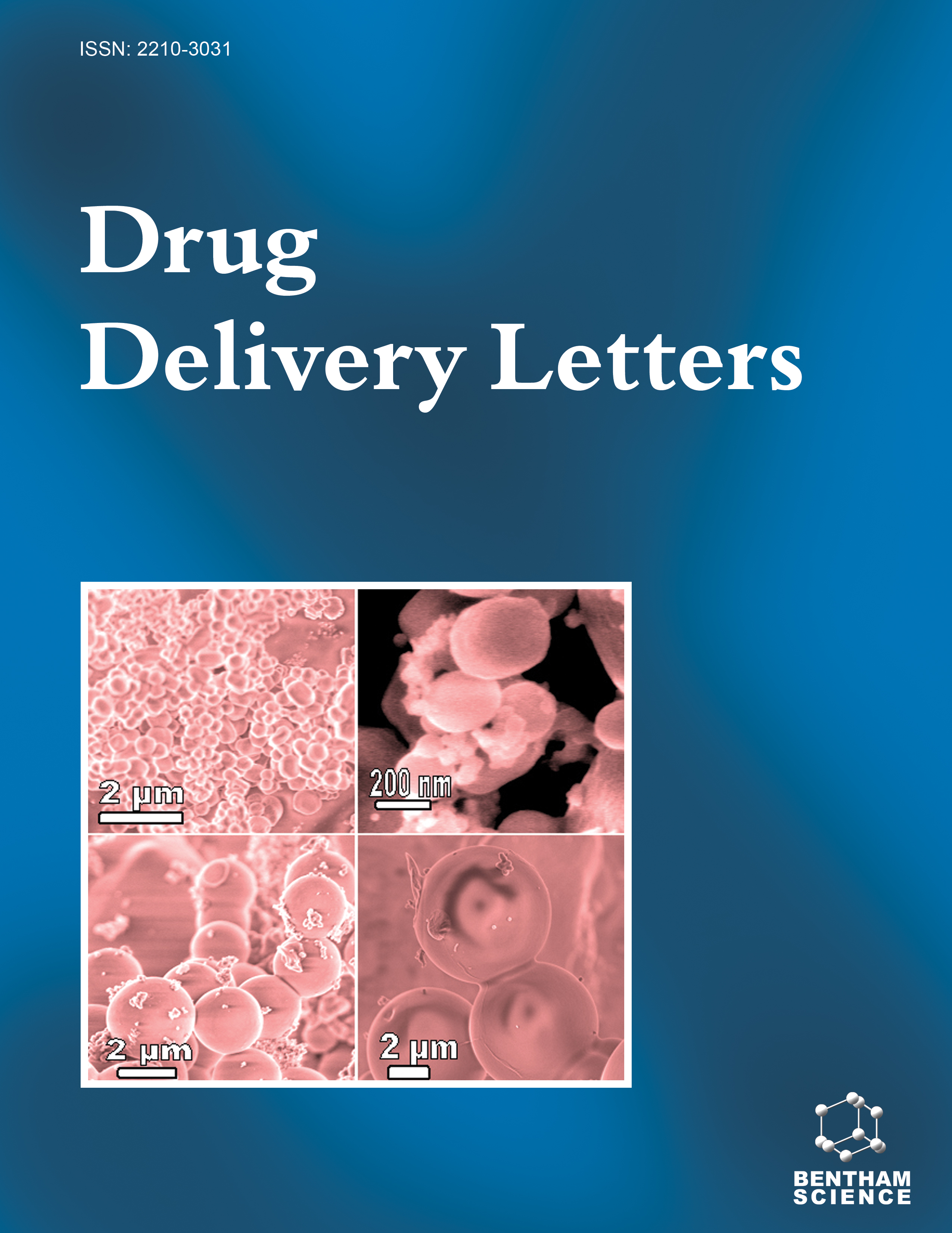- Home
- A-Z Publications
- Drug Delivery Letters
- Previous Issues
- Volume 1, Issue 2, 2011
Drug Delivery Letters - Volume 1, Issue 2, 2011
Volume 1, Issue 2, 2011
-
-
Stagnation Pressure in Liquid Needle-Free Injection: Modeling and Experimental Validation
More LessAuthors: Kai Chen, Hua Zhou, Ji Li and Gary J. ChengLiquid needle-free injectors employ high-velocity liquid jets to deliver drugs and vaccines. Several parameters are critical to the injection quality: nozzle diameter, volume of drug delivered, ampoule diameter, pressure that drives liquid volume, and impact gap (distance between piston and trigger). A physical model is presented to calculate the stagnation pressure of the injection jet. Two types of the injection systems were t Read More
-
-
-
Targeted Taxane Delivery Systems: Recent Advances
More LessAuthors: Daniela Gastaldi, Daniele Zonari and Franco DosioTaxanes (paclitaxel and docetaxel) are among the most active cytotoxic agents in use in oncology, being widely used in adjuvant and advanced treatment settings in multiple tumor types. Due to the impressive benefits offered by the taxanes, different strategies are in development, aimed at reducing their systemic toxicity and the need for premedication, while improving anti-tumor spectra and treatment efficacy. Although a Read More
-
-
-
Delivery Systems for Applications in siRNA Technology
More LessShort interfering RNAs, or siRNAs, belong to a class of RNA species which play a role in both cellular defence and gene regulation. siRNAs are members of a larger RNA interference pathway found within cells and are involved in the degradation of RNAs which possess complementarity to specific target sequences. This property has given siRNA technology the potential to become a powerful new tool for a wide variety of di Read More
-
-
-
Recent Advances Using Supercritical Fluid Techniques for Pulmonary Administration of Macromolecules via Dry Powder Formulations
More LessAuthors: Iman M. Al-fagih, Fars K. Alanazi, Gillian A. Hutcheon and Imran Y. SaleemGrowing demands on a suitable formulation method that ensures the stability of the active compound coupled with the limitations of current methods (milling, lyophilization, spray drying, and freeze spray drying) has brought wide attention to supercritical fluid (SCF) technology. Advantages of using the SCF technology comprise its high abilities, adaptability in providing alternative processing methods, high compr Read More
-
-
-
Recent Advances in Thermosensitive Hydrogels as Drug Delivery Systems: A Review
More LessAuthors: Jose Maria Bermudez, Daniela Quinteros, Ricardo Grau, Daniel Allemandi and Santiago PalmaPolymers that exhibit physicochemical responses to stimuli have been widely explored as potential drug delivery systems. Different kind of stimuli investigated to date includes, for example, chemical substances and changes in temperature, pH and electric fields. Polymers that exhibit dramatic changes in their behavior in an aqueous solution at temperatures close to the body temperature are of particular interest in drug deliver Read More
-
-
-
Nanoemulsion Formulation Enhances Intracellular Activity of Capuramycin Analogues against Mycobacterium Tuberculosis
More LessAuthors: Venkata M. Reddy, Elena Bogatcheva, Leo Einck and Carol A. NacyCapuramycin (CM) antibiotics are bactericidal for Mycobacterium tuberculosis (MTB) in vitro. Due to their low membrane permeability and efflux, however, these compounds are less effective against intracellular MTB. To improve intracellular activity, we created phospholipid Phosal 53 MCT-based nanoemulsion (NE) formulations of CM analogues SQ641, SQ641-aua, SQ641-2aua and SQ997-3aua. We assessed intracellular kill Read More
-
-
-
Nanoemulsions for Skin Targeting: Present Status and Future Prospects
More LessAuthors: Mukta Singh and Subheet JainThe use of nanoemulsions as a carrier system for skin targeting has attracted increased attention over recent years. Nanoemulsions can be intended for both topical and systemic delivery of the biologically active agents for controlled and targeted delivery. Nanoemulsion droplets fall within the size range of 20-200nm, typically below 100nm. Nanoemulsions have high surface area and ability to solubilize poorly soluble Read More
-
-
-
Micelle-based Systems for Pulmonary Drug Delivery and Targeting
More LessAuthors: Fernanda Andrade, Mafalda Videira, Domingos Ferreira and Bruno SarmentoThe respiratory system is in extensive contact with the outside environment, being a place for materials and chemical exchanges. Lungs and airways are constantly exposed to hazardous conditions, and thus able to develop various diseases. Pulmonary administration of compounds for the treatment of respiratory tract diseases has been performed since ancient cultures, and is currently being studied as a route of administr Read More
-
Volumes & issues
Most Read This Month
Article
content/journals/ddl
Journal
10
5
false
en


